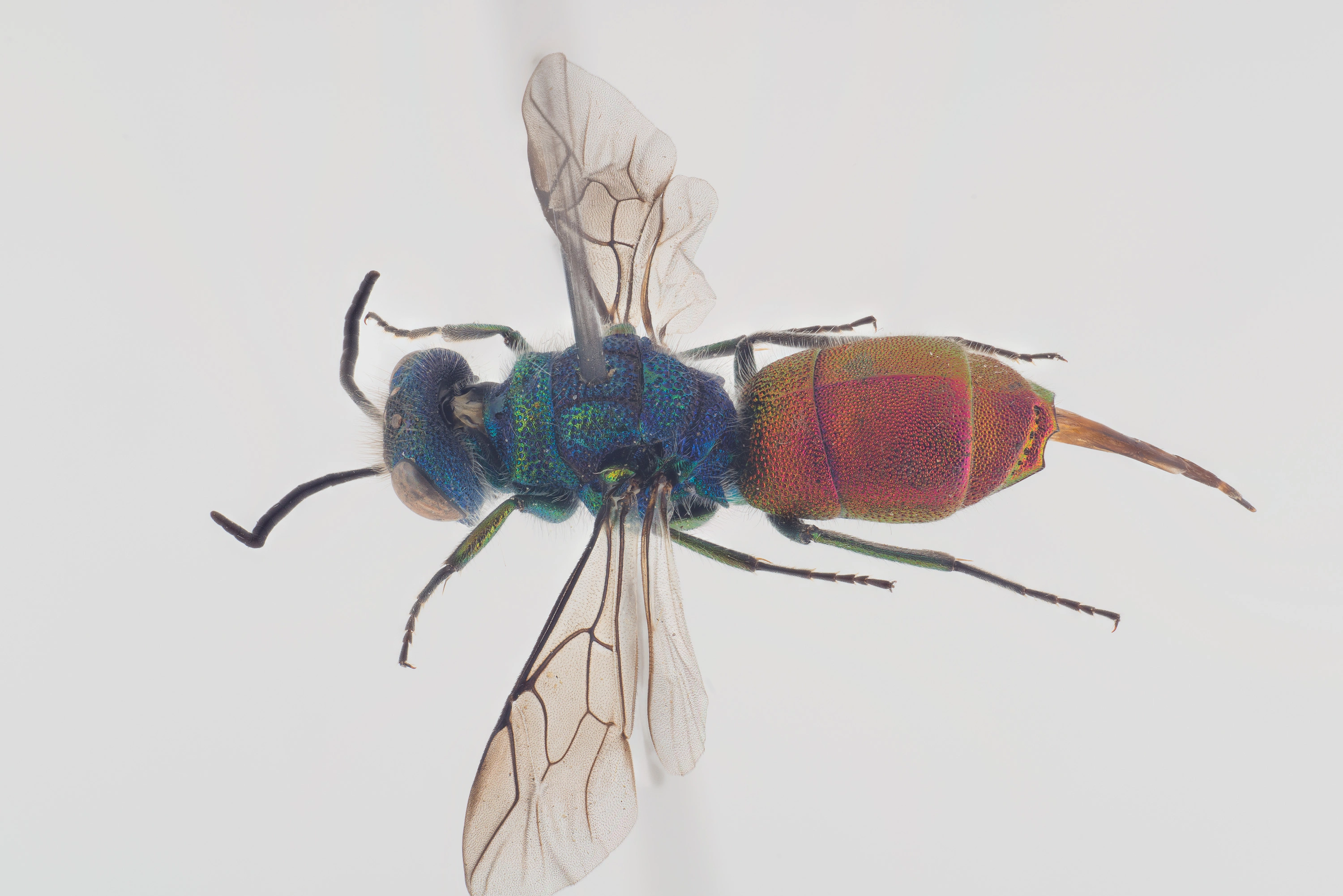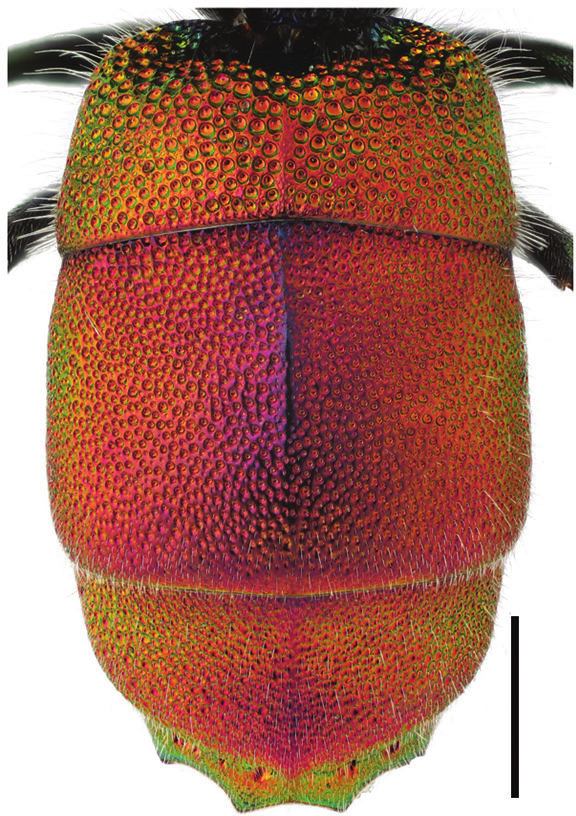Chrysis ruddii
A relatively common species in forest margins and sandy areas. The host is the Eumeninae Ancistrocerus oviventris. The species is relatively easy to recognize through the densely punctured tergites, red sternites, and the broad pronotum.
- Innhold
- Diagnosis
- Distribution
- Biology
Diagnosis
Figure 96
Metasoma, dorsal view: C. ruddii ♀. Scale 1 mm.
Length 7–10 mm.
As in most other species of the C. ignita group, the head and mesosoma are mainly blue or green and the metasoma is dorsally golden red. However, the mesoscutum, mesoscutellum and propodeum, and often also tegulae and mesopleuron, have extensive golden or coppery reflections in the female. The sternites and legs are ventrally coppery red in both sexes. The punctation of the tergites is very fine and dense throughout, punctures being of uniform size (Fig. 96). In the male, the punctation is often somewhat sparser, and therefore it is more easily confused with other similarly coloured species of the C. ignita group (e.g. C. subcoriacea). The combination of a short pronotum (length less than one fourth of its width), non-metallic F1 and coppery red sternites should be used to distinguish C. ruddii males reliably from other species of the group.
Distribution
Denmark, Estonia, Finland, Latvia, Lithuania, Norway, Sweden. Relatively common.
West Palearctic: Europe, Asia Minor (Linsenmaier 1997).
Be aware that the records present in the GBIF map may be misleading for some countries due to unrevised data sets or missing information.
GBIF Taxon: Chrysis ruddii Shuckard, 1838Biology
Habitat: dry meadows, rocky outcrops, cliffs, clay banks, forest margins. Adults occasionally visit flowers of Apiaceae and Euphorbiaceae (Heinrich 1964, Linsenmaier 1997, Rosa 2004, 2006).
Flight period: mid-May to early August.
Host: primarily Ancistrocerus oviventris (Wesmael) (Berland and Bernard 1938, Banaszak 1980, Morgan 1984, Kunz 1994, our own obs.), but possibly also A. parietum (Linnaeus), A. scoticus (Curtis), species of Eumenes Latreille, Odynerus spinipes (Linnaeus) and O. reniformis (Gmelin) (Vespidae) (Forsius in Trautmann 1927, Berland and Bernard 1938, Banaszak 1980, Kunz 1994, Martynova and Fateryga 2015, our own obs.). Records stating solitary bees (e.g. Hoplitis adunca (Panzer) and H. anthocopoides (Schenck)) as hosts are doubtful, as bees differ significantly in their biology from the vespid hosts.

